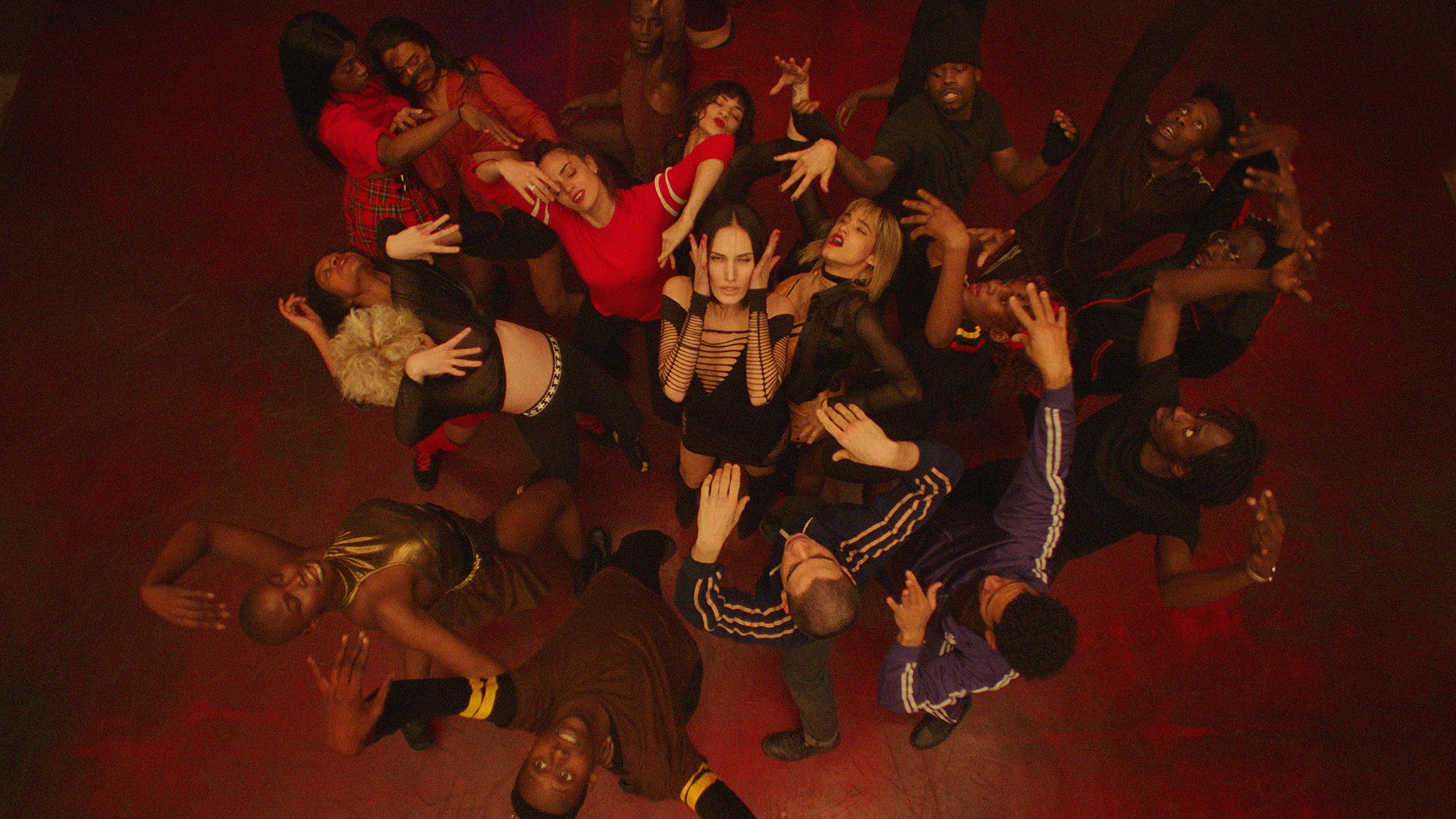Film Review: Climax (2019)

The most appealing part of Gaspar Noé’s Climax is its opening. In it, we are introduced to an assemblage of dancers via interviews recorded on out of date video equipment. The screen they appear on is an old television set affixed among a pile of books and VHS tapes. However interesting these young people may be with their hip attitudes and naive confidences become lost in the clever use of set decoration. The books and the videotapes become the focal point, and in studying their titles, we’re given clues as to what we’re about to see visually and how it may affect us psychologically. It’s a neat trick and an example of the kind of referential and meta-filmmaking that I enjoy. I only wish this kind of acuity was available throughout the rest of the film. It’s not. In its place is a near pointless sensory assault that fails at being as shocking as it thinks it is.
I’m no puritan. I can handle outrageous imagery and offensive content, and even see value in it when it has a purpose. Climax has no discernible purpose, and that is what offends me. If it’s a statement of some kind, I’ve missed it. If there’s an allegory or metaphor linked to it, I’ve failed to pick it up. What’s left is a director trying his damnedest to make his audience vomit or have a seizure from tilting cameras, loud music, and flickering lights – but failing. There are some nasty moments, for sure, but I didn’t take any of them with me when I left the theater. The most lasting effect Climax had on me was a sense of annoyance.
After the initial VHS cast introduction, we’re taken to a remote school in France where the troupe is rehearsing for a tour. There is a lot of dancing and being one who knows nothing about that particular art form, I can’t comment on whether it’s any good. What I can say is that it gets monotonous, and then it happens again… and again. In the revelry after the rehearsal, sangria is served, and everyone begins to relax. Slowly, it’s realized that their drinks have been laced with a powerful hallucinogen and everybody begins reacting with varying degrees of horror. Violence and paranoia break out while the cast navigates the ever-deepening chasm between reality and delusion.
We never see any of the hallucinations, and any trippy colors are relegated to the natural colored lights present in the building so there are no Kubrick-ian awe-inspiring revelations. We are left as mere spectators to the increasing horror. The problem is that the horror doesn’t actually increase – it simply becomes repetitive. The numerous long takes employed also become tiresome as they never amount to much more than following a screaming person down a dimly lit hallway. The first long shot after the rehearsal is well choreographed, but again, Noé finds a way to make it tedious and uninteresting by the sheer nature of the conversations taking place by the mostly unlikable cast.
Climax might cause a few to leave their seats, but they won’t do so out of shock or outrage. They’ll do so out of boredom and apathy. Noé thinks he’s made a movie that will be controversial, but it won’t be. His attempts at pushing the envelope are cheap, lazy, and irritating. Climax may be discussed, but not for the reasons the director would like.

